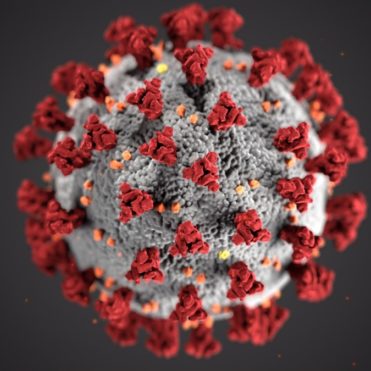Frequently Asked Questions (FAQs)
Novel Coronavirus Disease (COVID-19)
1. What is a coronavirus?
2. How are coronaviruses spread?
• Droplets produced through coughing and sneezing
• Close personal contact, such as caring for an infected person
• Touching an object or surface with the virus on it, then touching your mouth, nose, or eyes before washing your hands
3. What are the symptoms of COVID-19?
Symptoms of COVID-19 may include some combination of the following: fever, cough, shortness of breath or difficulty breathing, chills, repeated shaking with chills, muscle pain, headache, sore throat, or new loss of taste or smell. This list of symptoms is not all inclusive. Please consult your medical provider about any other symptoms that are severe or concerning to you.
4. What should I do if I have these symptoms?
Be sure to tell all of your close contacts that they need to be in quarantine for 14 days after their last contact with you. Close contacts include all household members, any intimate contact, and all individuals who were within 6 feet of you for more than 10 minutes, starting 48 hours before your symptoms began until your isolation period ends. In addition, anyone who had contact with your body fluids and/or secretions (such as were coughed on/sneezed on, shared utensils or saliva or provided care to you without wearing protective equipment) needs to be in quarantine. See the Home Quarantine Guidance for Those Exposed to COVID-19 for additional guidance.
Those with symptoms other than fever, cough, shortness of breath or difficulty breathing should talk to their provider about whether they might have COVID-19 and whether they should stay isolated at home.
Older adults, and those with compromised immune systems or underlying medical problems who experience COVID-19 symptoms should call their doctor early.
If you are having difficulty breathing, feel pain or pressure in your chest, have bluish lips or face or are experiencing a new onset of confusion or difficulty waking up call 911 or go to an emergency room, otherwise call your doctor before going in to seek care.
For more guidance, read Home Care Instructions for People with Respiratory Symptoms.
If you are confirmed to have COVID-19, follow the Home Isolation Instructions for People with Coronavirus-2019 (COVID-19) Infections.
5. Can I get tested for the coronavirus?
We do not recommend that asymptomatic individuals get tested for COVID-19 but in the event that you do get tested even though you don’t have symptoms and your test comes back positive you should stay home and away from the public for at least 10 days from when you were tested. If your test comes back negative, you should continue to stay at home unless you are an essential worker or need to obtain essential services. When leaving your home, follow recommended physical distancing practices by staying at least 6 feet away from others and using a cloth face covering when you are in contact with others outside your home. It is important to note that a negative test result may just mean that you were not infected at the time the test was done but you could still become infected at a later point so it is important to continue to practice prevention measures such as physical distancing and washing your hands frequently.
If you were tested while in quarantine even though you were asymptomatic, and your test is positive you should stay home and away from the public for at least 10 days from when you were tested. Your quarantine period will also end on that day.
On the other hand, if you got tested even though you don’t have symptoms and your test is negative you still have to remain in quarantine for the full 14 days from the last contact with the person who either has COVID-19 or has symptoms of COVID-19. See the test result guidance on the public health webpage for more details.
6. How is novel coronavirus treated?
There is currently no vaccine to prevent novel coronavirus. Be aware of scam products for sale that make false claims to prevent or treat this infection.
7. What can I do to protect myself and others from COVID-19?
You should:
• Practice social distancing in compliance with health officer orders. This means everyone should stay home unless they need to access essential services or are an essential worker. Whenever you are out, keep 6 ft. apart from everyone else as much as possible.
• Stay home when you are sick.
• Wash your hands with soap and water for at least 20 seconds, especially after going to the bathroom; before eating; and after blowing your nose, coughing, or sneezing.
• If soap and water are not readily available, use a hand sanitizer with at least 60% alcohol. Always wash hands with soap and water if hands are visibly dirty.
• Avoid touching your eyes, nose, and mouth with unwashed hands.
• Avoid close contact, like kissing and sharing cups or utensils, with people who are sick.
• Clean and disinfect frequently touched objects and surfaces using a regular household cleaning product.
• Cover your cough or sneeze with a tissue, then throw the tissue in the trash. If you do not have a tissue, use your elbow (not your hands).
• Wear a cloth face covering whenever you are outside of your home and around others.
• Avoid all non-essential travel
8. Should I wear a facemask?
Infants and children under the age of 2 should not wear cloth face coverings. Those between the ages of 2 and 8 should use them but under adult supervision to ensure that the child can breathe safely and avoid choking or suffocation. Anyone who has trouble breathing, or is unconscious, or otherwise unable to remove the mask or cloth face covering without assistance should not wear one.
9. How can I protect myself when I travel?
Check the CDC COVID-19 Information for Travel webpage https://www.cdc.gov/coronavirus/2019-ncov/travelers/index.html for up-to-date recommendations.
10. What should I know about school and business closures?
Public health is encouraging organizations and schools to provide critical services if on-site operations are temporarily reduced. Speak with your children’s school or daycare center to learn about their emergency operation plan.
11. What can I do if I get stressed about COVID-19?
12. What can I do if I am feeling harassed or discriminated against?
13. What else can I do?
- Find a healthcare provider if you don’t already have one.
- Update your emergency kits with food and supplies to last 14 days in case there is a need for quarantine. It is important to be prepared as you would for any other emergency.
- Always check with reliable sources for the up-to-date, accurate information about novel coronavirus.
- Los Angeles County Department of Public Health (LACDPH, County)
- California Department of Public Health (CDPH, State)
- Centers for Disease Control and Prevention (CDC, National)
- World Health Organization (WHO, International)
If you have questions and would like to speak to someone, call 2-1-1

